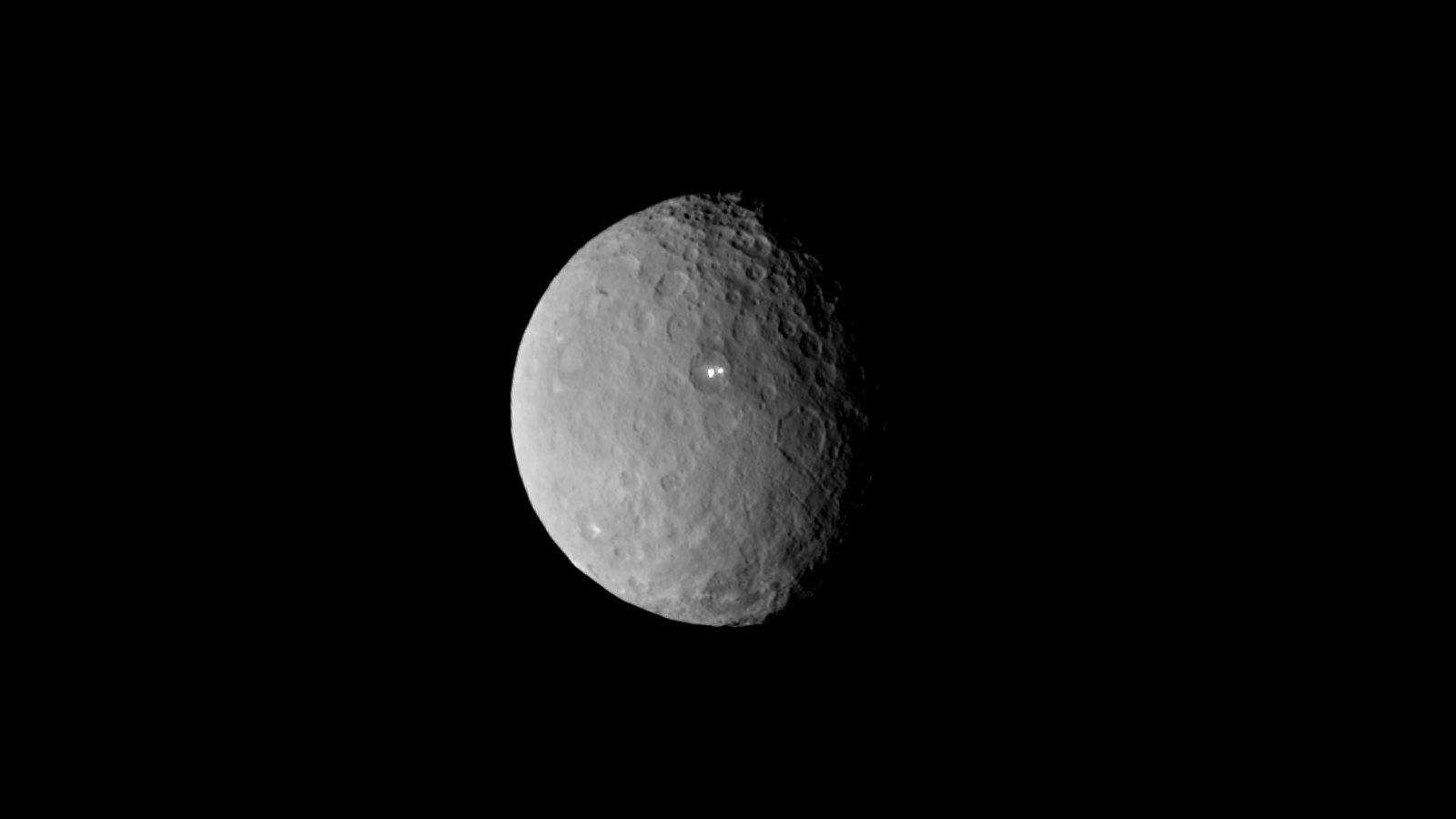An Active Dwarf Planet
Ceres is the largest body in the asteroid belt that rests between Mars and Jupiter. In fact, it's so large that it is classed as a dwarf planet. Despite this, from Earth, Ceres appears to be just one of the (many) tiny points of light visible in the night sky, but the light it emits has an interesting story.
Observations made using the HARPS spectrograph at the European Space Agency's La Silla Observatory in Chile have revealed unexpected changes in the bright spots on Ceres. Careful study of its light shows the changes expected as Ceres rotates, but also that the spots brighten during the day and show a number of other variations.
In short, Ceres' spots are dynamic.
Surprising Results
NASA’s Dawn spacecraft has been in orbit around Ceres for more than a year, and it has mapped its surface in great detail, including these intriguing bright spots that reflect far more light than their much darker surroundings. The most prominent of these spots lies inside the crater Occator. Ultimately, they suggest that Ceres may be a much more active world than most of its neighbors.
A team of scientists observed Ceres with HARPS for a little over two nights in July and August 2015. "The result was a surprise," says Antonino Lanza, at the INAF–Catania Astrophysical Observatory. "We did find the expected changes to the spectrum from the rotation of Ceres, but with considerable other variations from night to night.”
The team concluded that the observed changes could be due to the presence of volatile substances that evaporate under the action of solar radiation. When the spots inside the Occator crater are on the side illuminated by the Sun, they form plumes that reflect sunlight. These plumes evaporate quickly and lose their reflective quality. This effect changes from night to night, giving rise to additional random patterns.
Share This Article
